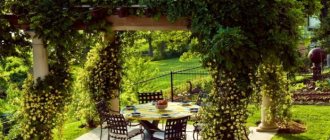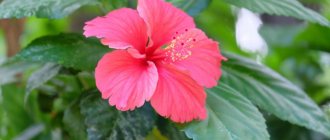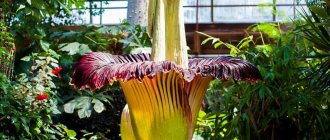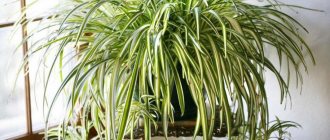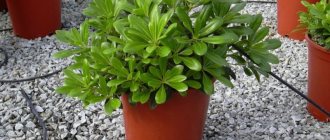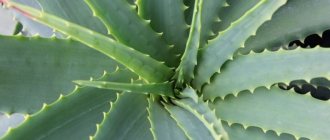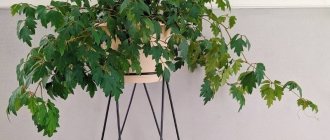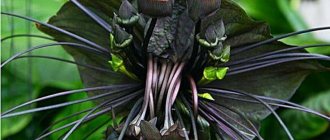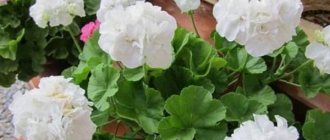A corner of paradise, where everything around is fragrant and pleasing to the eye... Is this how you want your garden to look in moments of relaxation?
It’s a completely understandable desire, and we’ll tell you how to make it come true. How to turn your plot into a fragrant paradise?
A breath of fresh air is our first impression after a flight when we arrive at a distant resort. At these moments we feel the changes especially acutely - the south greets us with aromas. Having reached the final point of the journey, we see that it could not be otherwise: not only the flowers are fragrant, but also the trees and shrubs.
Sources of pleasant odors do not always reveal themselves at first sight. Sometimes you have to come close to see small and not very interesting flowers or be surprised to discover that it’s not the flowers that smell, but the leaves or pine needles. Northern nature is poorer in aromas, but in the garden we can collect them into a “bouquet” sufficient to turn a summer cottage into a fragrant paradise.
What is needed for this? It would seem that everything is very simple: plant more fragrant plants. But remember: pinpoint “inclusions” of aromas will dissolve in space, so it makes sense to “increase the concentration.” It is clear that the contribution from a hedge of lilac or jasmine is incomparably greater than from a separate bush, and the aroma from a wide strip of snowdrops and corydalis planted under it spreads further than from a small curtain in a flowerbed.
Important : each fragrant plant has its own “critical mass” at which it is able to make itself known from a distance. It is this factor that is worth focusing on.
Crown jasmine or garden jasmine (Philadelphus coronarius) is an excellent choice for a fragrant hedge.
There is one more important nuance: most often, we are primarily attracted by the beauty of plants, and not by their aroma. Therefore, when creating a fragrant corner, we are faced with a contradiction, discovering that our favorite plants sometimes try to slightly deceive us, not meeting our expectations. But this problem can be corrected, because the same garden crop is often represented by both fragrant and odorless varieties. On the one hand, peonies, lilies and roses also have varieties without fragrance, which in our minds “should” be fragrant.
On the other hand, pleasant surprises also happen where we don’t expect them. For example, in a sea of scentless tulips, there are masterpieces not only in beauty, but also in aroma.
Advice: without giving up your favorite plants, find among them varieties that, by more fully affecting the senses, give rise to more pleasant emotions. Among the beauties of lilies (on the left), the most fragrant are oriental hybrids. It is better to buy tobacco and heliotrope (on the right) as seedlings, then you definitely can’t go wrong with the choice of variety
Peony
This flower is not only beautiful, but also very useful. Since ancient times, it has been a symbol of healing and longevity. According to one legend, the plant was named after the ancient physician Peony, who cured the god of the underworld.
It also helps ordinary people solve health problems. Many drugs have been made based on peony, which have a variety of properties: from sedatives and anticonvulsants to bactericidal and tonic.
However, its lush flowers have a strong and sweet aroma that can cause headaches, dizziness and even vomiting. Therefore, doctors do not recommend keeping them in the house, especially in the rooms of children and the elderly.
Passionflower
Passionflower is a capricious plant that feels comfortable in a warm and humid subtropical climate. It can be either an evergreen climbing shrub or a herbaceous plant. The flowers have a fantastic star-shaped shape and bright colors. The smell depends on the specific variety.
All varieties of passionflower are light-loving plants, so they need more sunlight. Ripe fruits are used in cooking, as they are absolutely safe to eat.
Fragrant flowers for indoor growing
In the conditions of modern indoor floriculture, not only highly decorative, but also fragrant plants with a long flowering period are especially popular:
- Madagascar jasmine or Stephanotis is a semi-shrub vine and prefers good light. The star-shaped white flowers have an exquisite aroma, but the perennial requires support and careful regular care;
- the capricious fragrant Gardenia needs good lighting, warmth and moisture, therefore it is most often grown only by experienced gardeners;
- exotic Amazonian lily or Eucharis has a very pleasant and delicate aroma. The bulbous perennial is distinguished by large dark green foliage and umbellate exquisite inflorescences;
- Hoya or wax ivy produces flowers with a strong sweetish scent that intensifies in the late afternoon. The liana is unpretentious and drought-resistant, and also has attractive leathery leaves and long shoots.
Titan Arum or Amorphophallus titanium
This exotic plant, incredibly beautiful to look at, is nicknamed “corpse plant”. The flower received this name for a reason - its smell is compared to the stench of decaying flesh and feces. Titan Arum (another name for Amorphophallus titanium) is favored by beetles and flies that lay larvae in dead bodies. Externally, it is a gigantic shell, an inflorescence without branches, and inside it is a container for thousands of bright scarlet flowers, emitting a dizzying stench. The only advantage of the plant is that it blooms once every 5-6 years and only for about 36 hours.
Lily of the valley
In the Middle Ages, medicines for fever, epilepsy, and heart disease were prepared from the plant.
In many regions of Russia, lilies of the valley can be planted. These low-growing perennial flowers thrive in shaded areas. A subtle floral aroma with tart cool notes can be felt even at a distance.
When planting lilies of the valley, you must remember that every year the rhizomes grow by 15–25 cm. The plant grows well and can even displace other flowers from the area. Therefore, experienced gardeners advise planting them in separate areas. Lily of the valley meadows bloom in May - June.
For abundant flowering you need:
- When planting lilies of the valley, avoid swampy soils; the plant thrives in moist, loamy soils with a low acidity level;
- maintain high soil moisture; when the soil dries out, plants die;
- apply mineral fertilizers;
- thin out plantings; if too dense, flowering noticeably worsens;
- remove weeds.
There are no problems with growing lilies of the valley in Russia. They tolerate winter calmly even in northern regions. Flowers can grow in one place for 5 years. After the specified period has passed, a transplant is recommended. When planting, preference should be given to shaded areas. They look good in gardens, near ponds, and in rockeries.
But the most interesting thing is that if you can bend down lower or carefully cut a few stems for a bouquet at home, then you can feel a completely unforgettable, downright divine, most delicate aroma! When I first smelled it, I was incredibly surprised that such babies could smell so unusual!
Irisana
https://otzovik.com/review_3350523.html
Rafflesia arnoldi
A real miracle grows in the tropical forests of Malaysia. Rafflesia arnoldi is a huge flower with a diameter of up to 2 meters and weighing more than 10 kg. The plant has 5 thick, leathery, red petals covered with white wart-like growths. It is almost impossible to admire the beauty of the flower with your own eyes - due to the strong smell of rotting meat emanating from its core, it is very risky to get closer than a meter.
Stephanotis
Stephanotis is also called Madagascar jasmine because it first appeared on the island of Madagascar. This fragrant guest from the tropics has become famous for its snow-white, star-shaped inflorescences. Depending on the variety, other shades are also found - cream, yellow, lavender, violet.
Does not tolerate overheating and drafts, and may refuse to bloom in a pot that is too spacious. Feels comfortable in a room with high humidity and diffused light. At home it grows up to 1 m.
Brugmansia
If you want your home to be filled with a dizzying aroma, you should pay attention to Brugmansia. The plant blooms after it begins to branch: approximately a couple of years after planting. Since in nature it is a huge bush, at home it is necessary to constantly trim and pinch the rapidly growing shoots.
The buds of this exquisite plant open up to 30 cm in diameter.
Loves moist air, regular spraying and plenty of sunlight, but is afraid of drafts.
Why do we need such house plants?
First of all, plants with a disgusting smell are so unusual and spectacular that they have aroused admiration and great interest for many years. Having seen such a natural phenomenon as nepenthes or amorphophallus, hardly anyone can remain indifferent.
In addition, many of them are not deprived of healing and magical properties.
- Geranium phytoncides have an antibacterial effect. Mosquitoes and midges do not like the smell of this flower, so by placing it near an open window, you can get rid of annoying insects.
- According to the teachings of Feng Shui, geranium absorbs negative energy, relieves depression, protects the home from quarrels, and creates an atmosphere of well-being and harmony.
- Stapelias are able to heal even the deepest emotional wounds and have a beneficial effect on the entire body.
- Amorphophallus tubers are often used in the preparation of East Asian dishes; the special substances they contain reduce cholesterol and blood sugar levels.
- A solution from Nepenthes jugs is used to wash the eyes and as a cough sedative. And in the homeland of this plant, local residents use them to cook rice.
Bird cherry
It is not for nothing that bird cherry repels ticks with its smell. The fact is that the flowers and leaves of this tree release a huge amount of biologically active substances that destroy pathogenic microbes in the air and the body.
Due to this property, bird cherry is recommended to be used to purify the air in residential areas. However, you shouldn't get carried away.
If you need strength and activity, then you should breathe for a couple of minutes through your right nostril
Phytoncides can cause headaches and have a poisonous effect on all living organisms. That is why you should not make bouquets of bird cherry and take them home.
